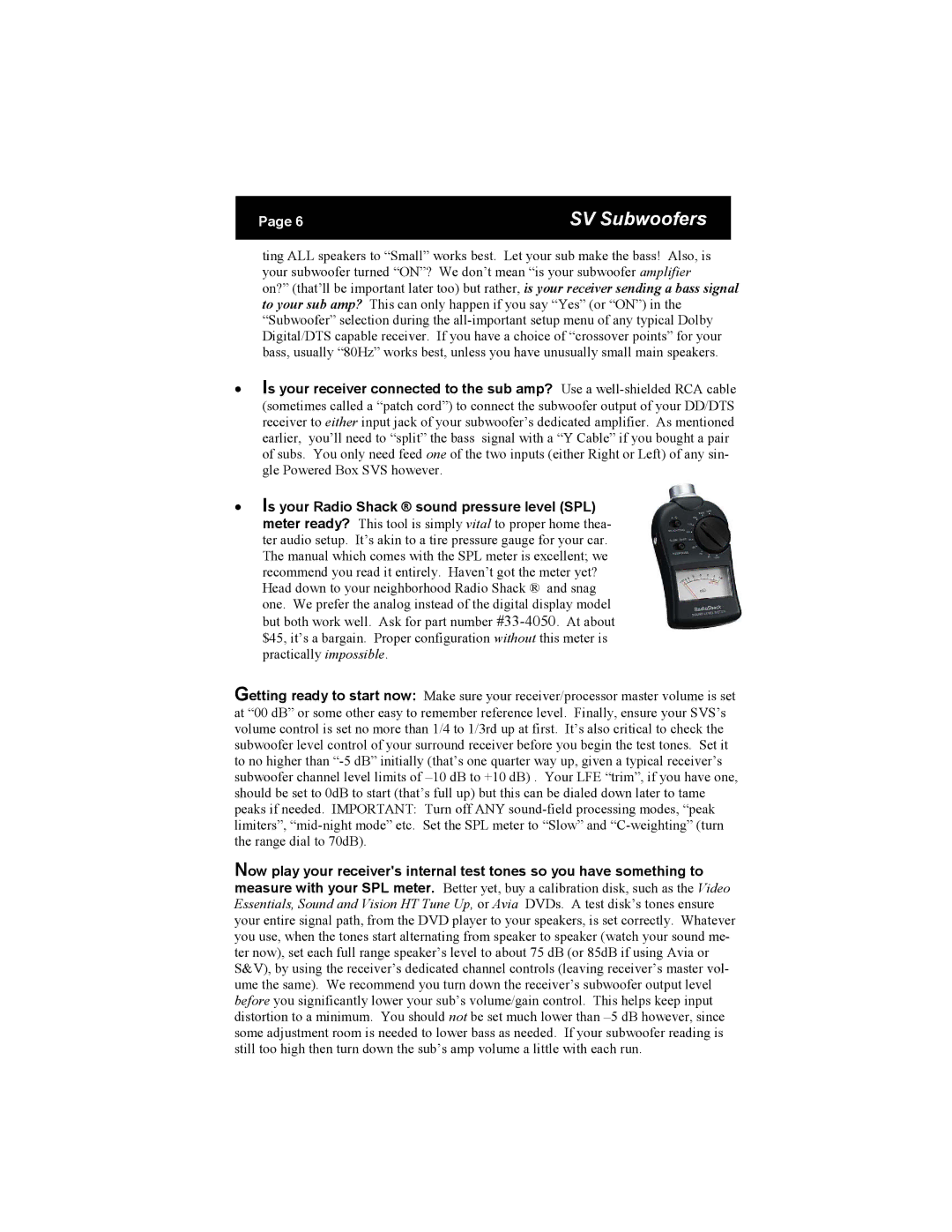SVS PB2-ISD specifications
The SV Sound SVS PB2-ISD is a powerful and sophisticated subwoofer designed to deliver deep and impactful bass for home theater enthusiasts and audio lovers alike. Featuring a robust cabinet design and high-quality components, this subwoofer brings out the best in movie soundtracks and music alike, providing an immersive listening experience.One of the main features of the PB2-ISD is its dual 12-inch inch driver configuration. These high-performance drivers are engineered for maximum displacement and efficiency, allowing them to produce low frequencies with high clarity and minimal distortion. The innovative design of the drivers ensures that they can handle the rigors of demanding audio tracks without sacrificing sound quality.
The PB2-ISD utilizes a state-of-the-art 1000-watt RMS amplifier that offers dynamic power handling, making it capable of delivering up to 3000 watts of peak power. This level of amplification allows the subwoofer to reproduce deep bass notes with ease, creating a visceral experience that can be felt as well as heard. The built-in DSP (Digital Signal Processing) allows for precise tuning and optimization of the subwoofer’s performance, ensuring that it can adapt to any room acoustics.
Another notable technology integrated into the SVS PB2-ISD is the advanced ported design. The subwoofer features a meticulously crafted enclosure with dual front-firing ports that enhance low-frequency output while reducing port noise and turbulence. This results in a cleaner, more controlled bass response that is free from unwanted artifacts.
The PB2-ISD is also equipped with variable phase control, which allows users to fine-tune the phase alignment between the subwoofer and the main speakers. This feature is crucial for achieving a seamless integration of sound across the frequency spectrum, especially in complex setups involving multiple speakers.
For those who want to customize their listening experience, the PB2-ISD includes a range of inputs and controls. It offers selectable crossover frequencies, line level, and speaker level inputs, providing flexibility for different audio setups.
In conclusion, the SV Sound SVS PB2-ISD is a high-performance subwoofer that combines advanced technology, powerful amplification, and superior build quality. It is designed to meet the needs of serious audiophiles and home theater setups, delivering an unparalleled bass experience that truly elevates audio performance to new heights. Whether for movies or music, the PB2-ISD proves to be an exceptional choice for those seeking deep, impactful bass.

